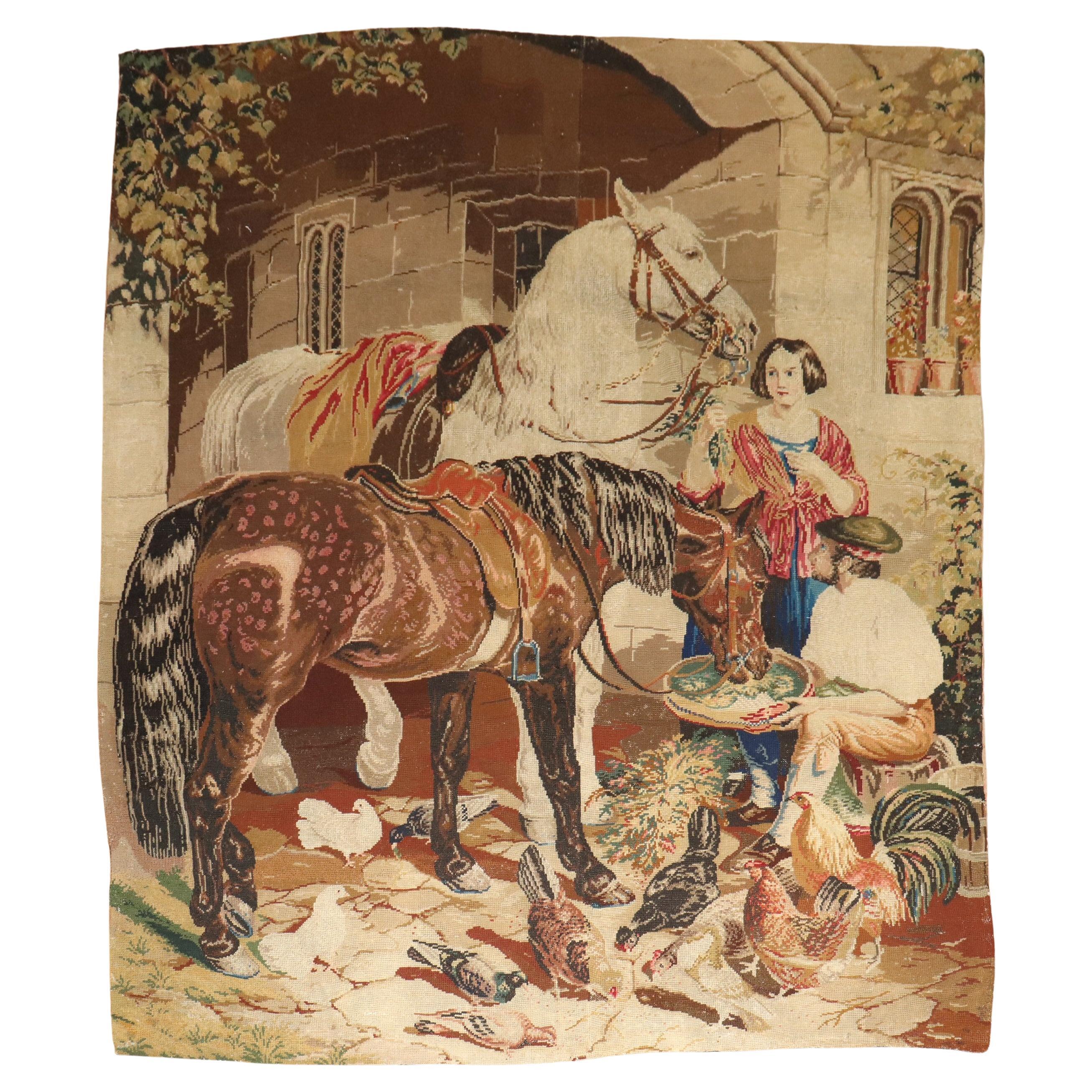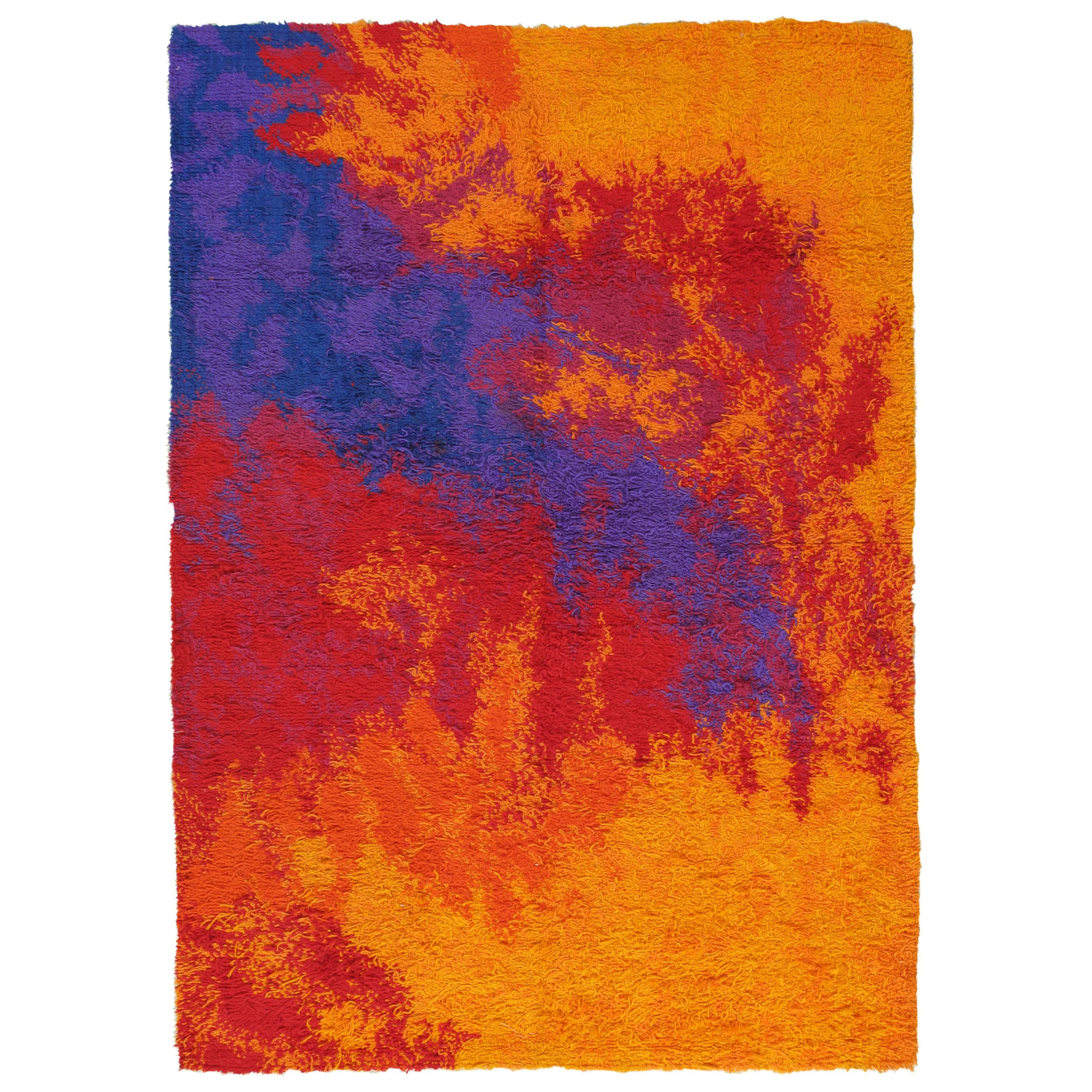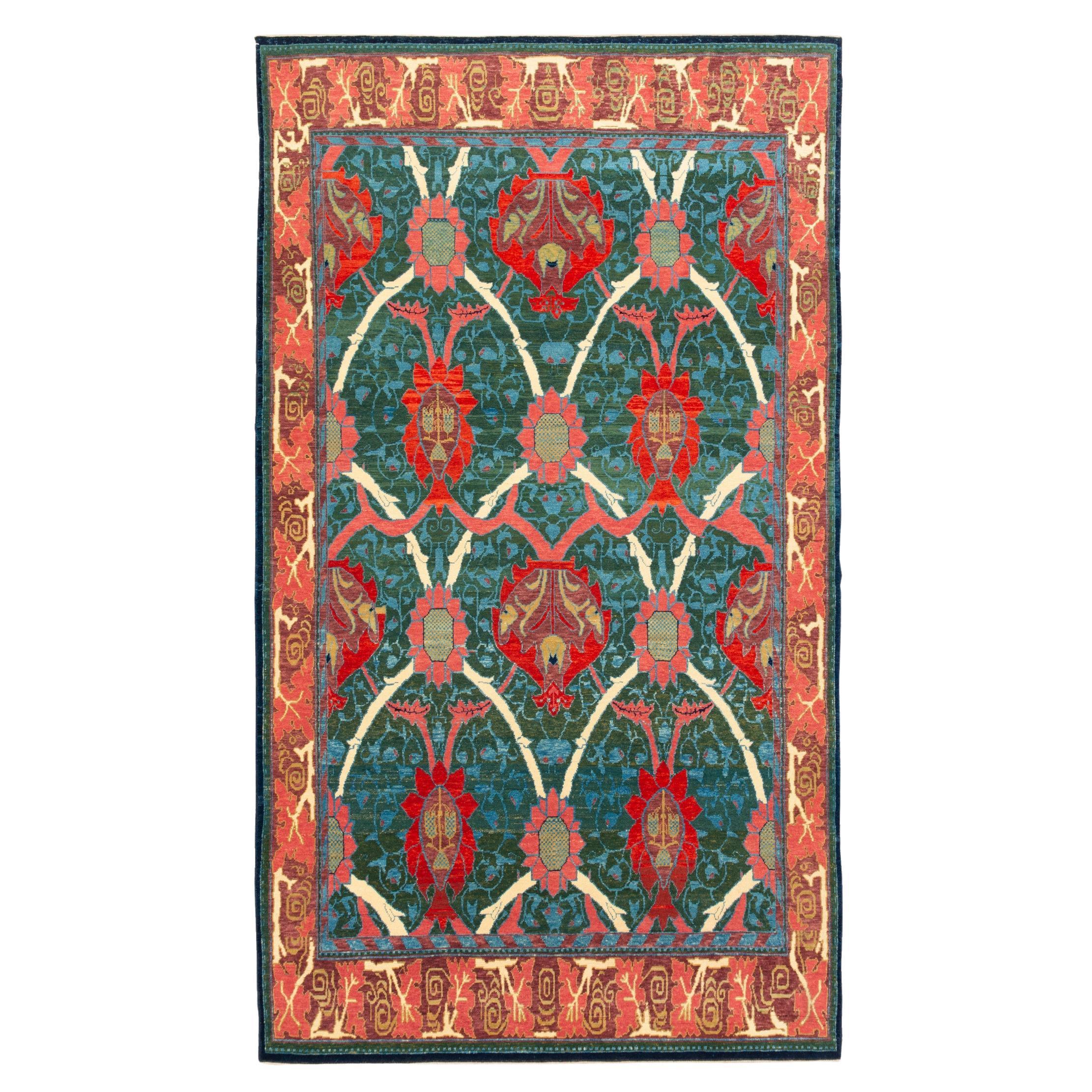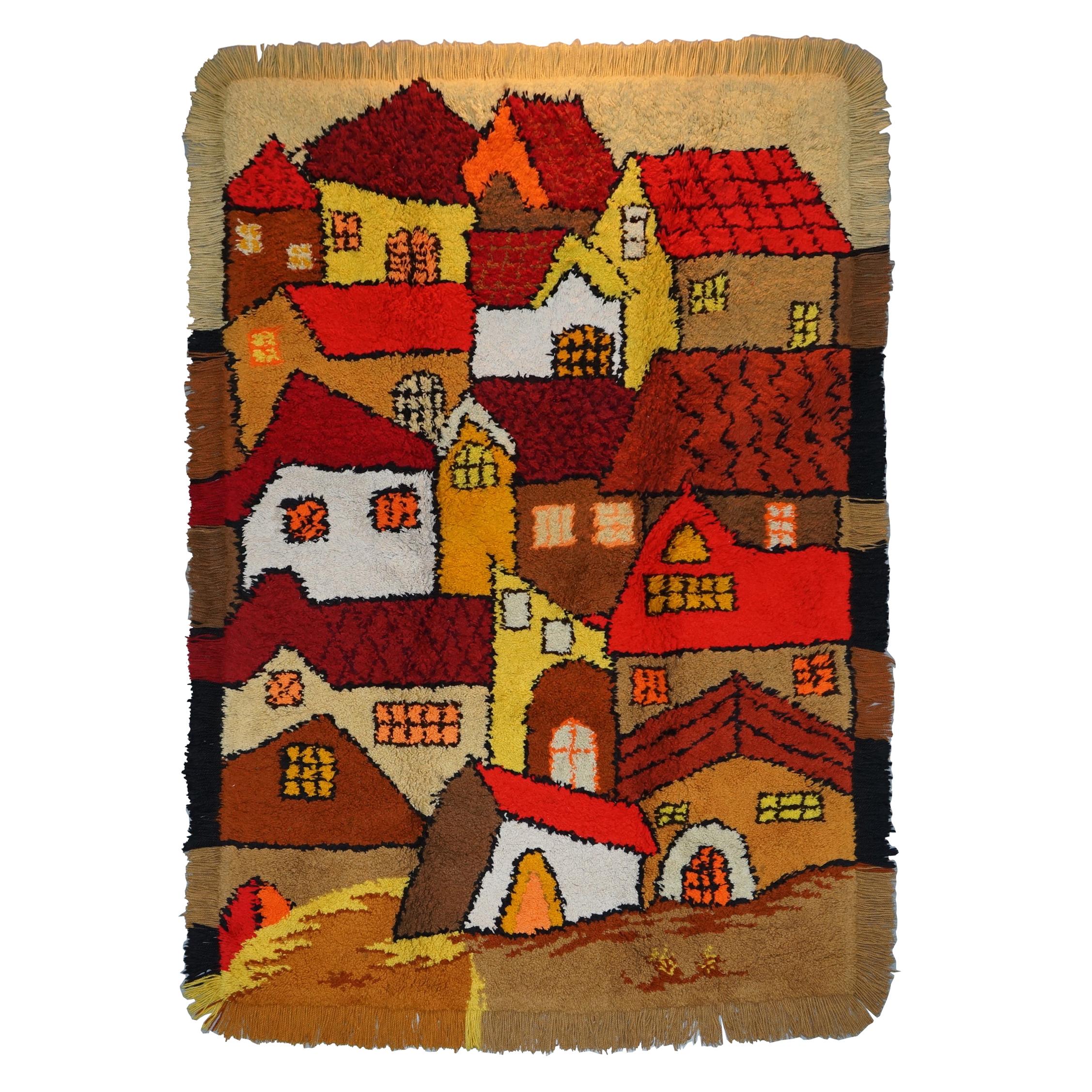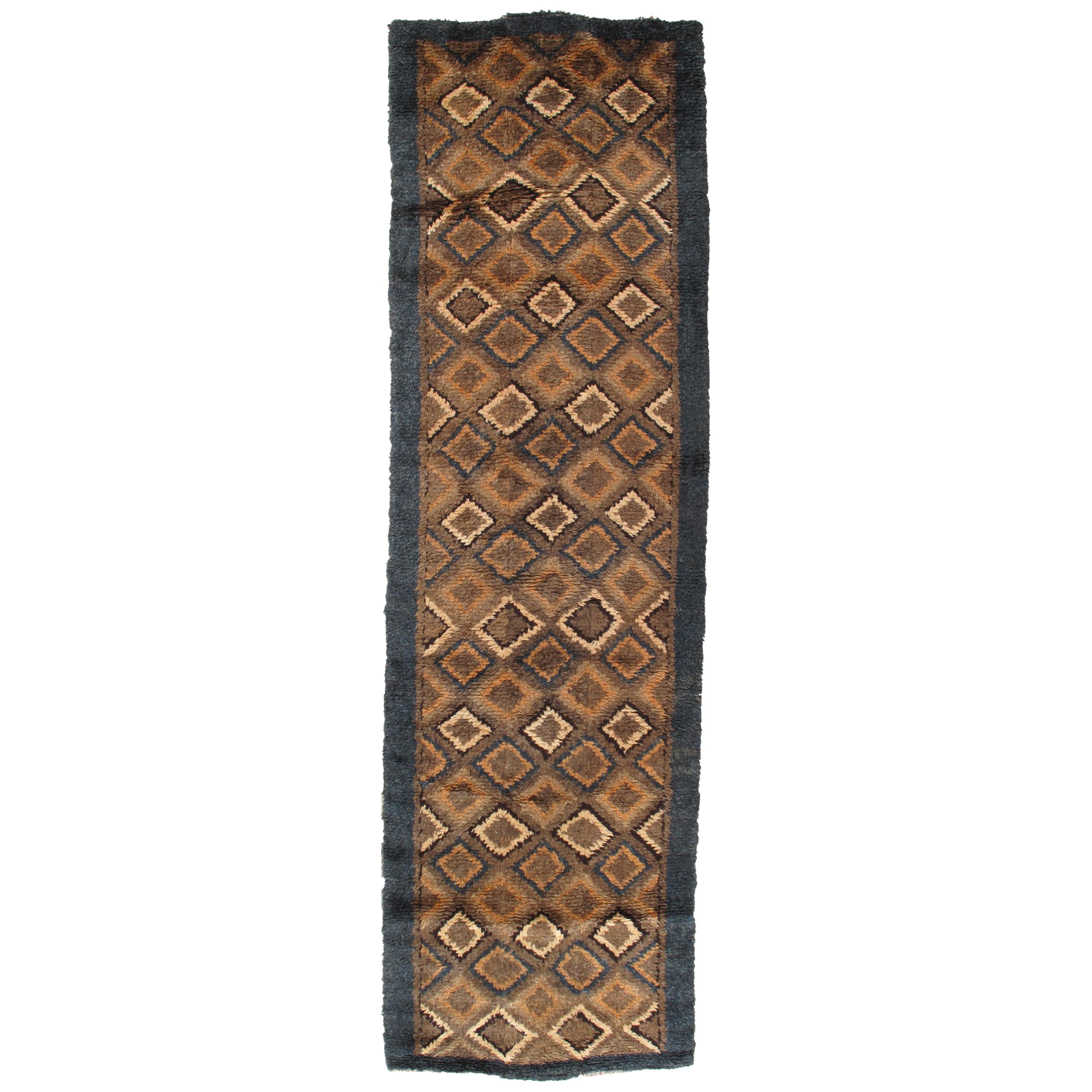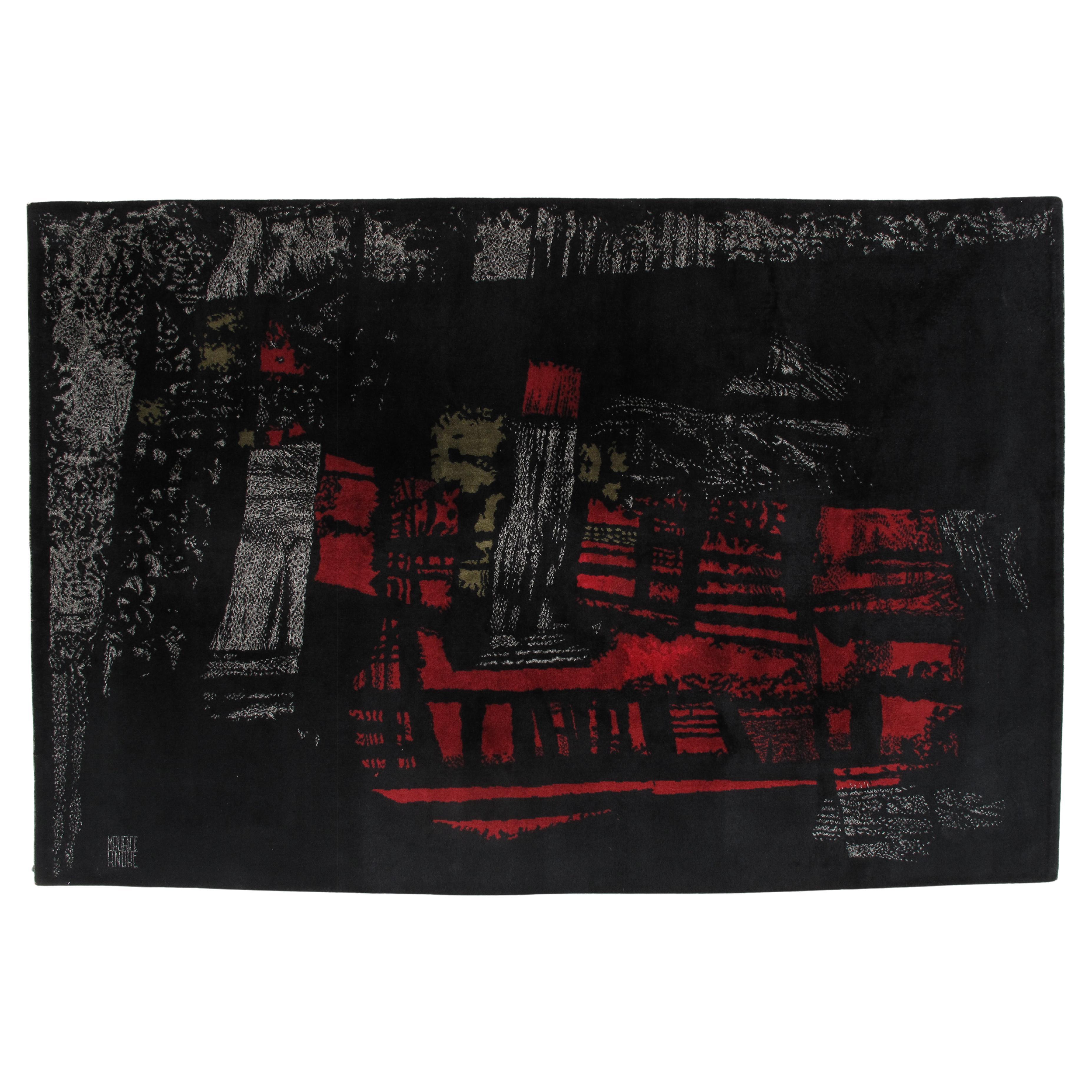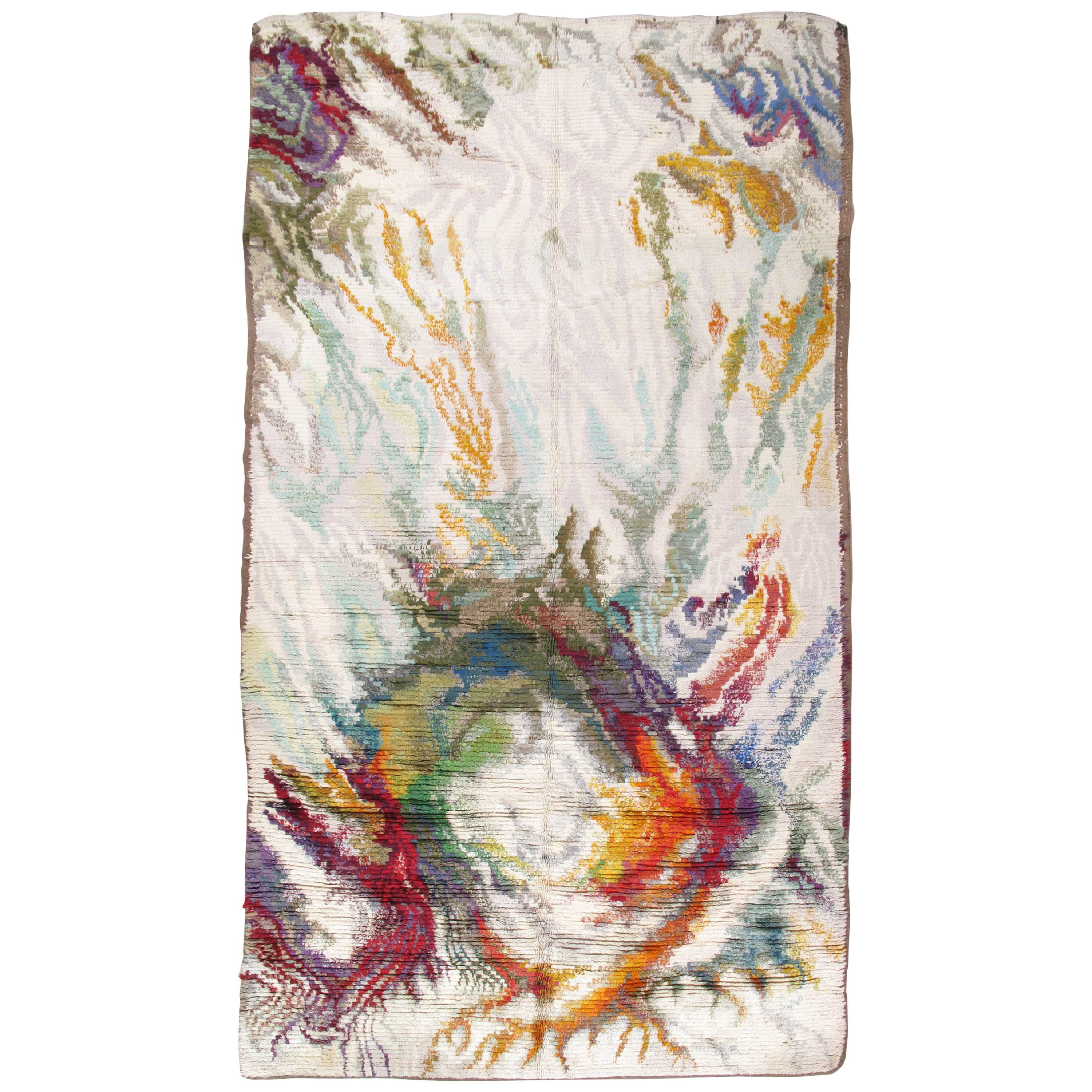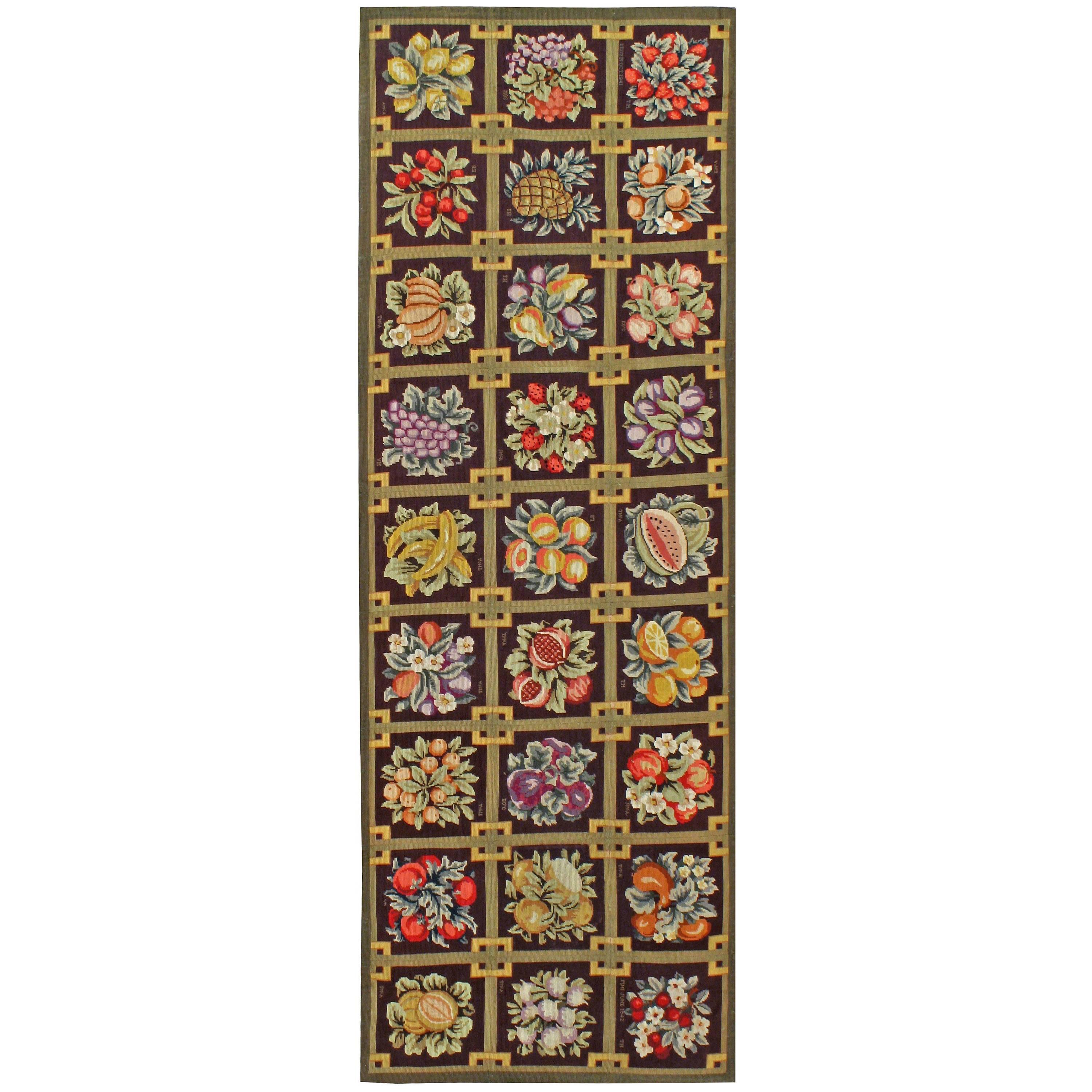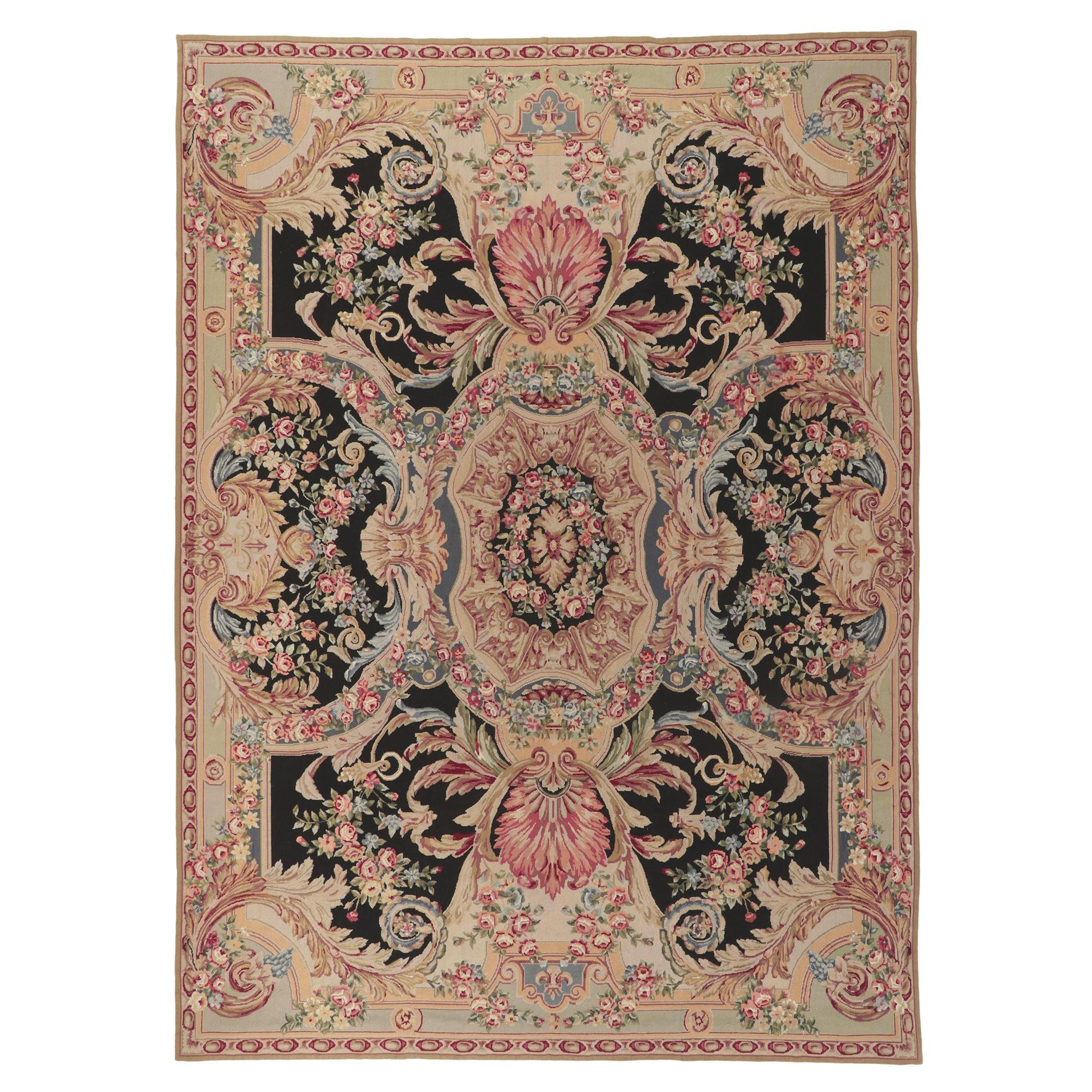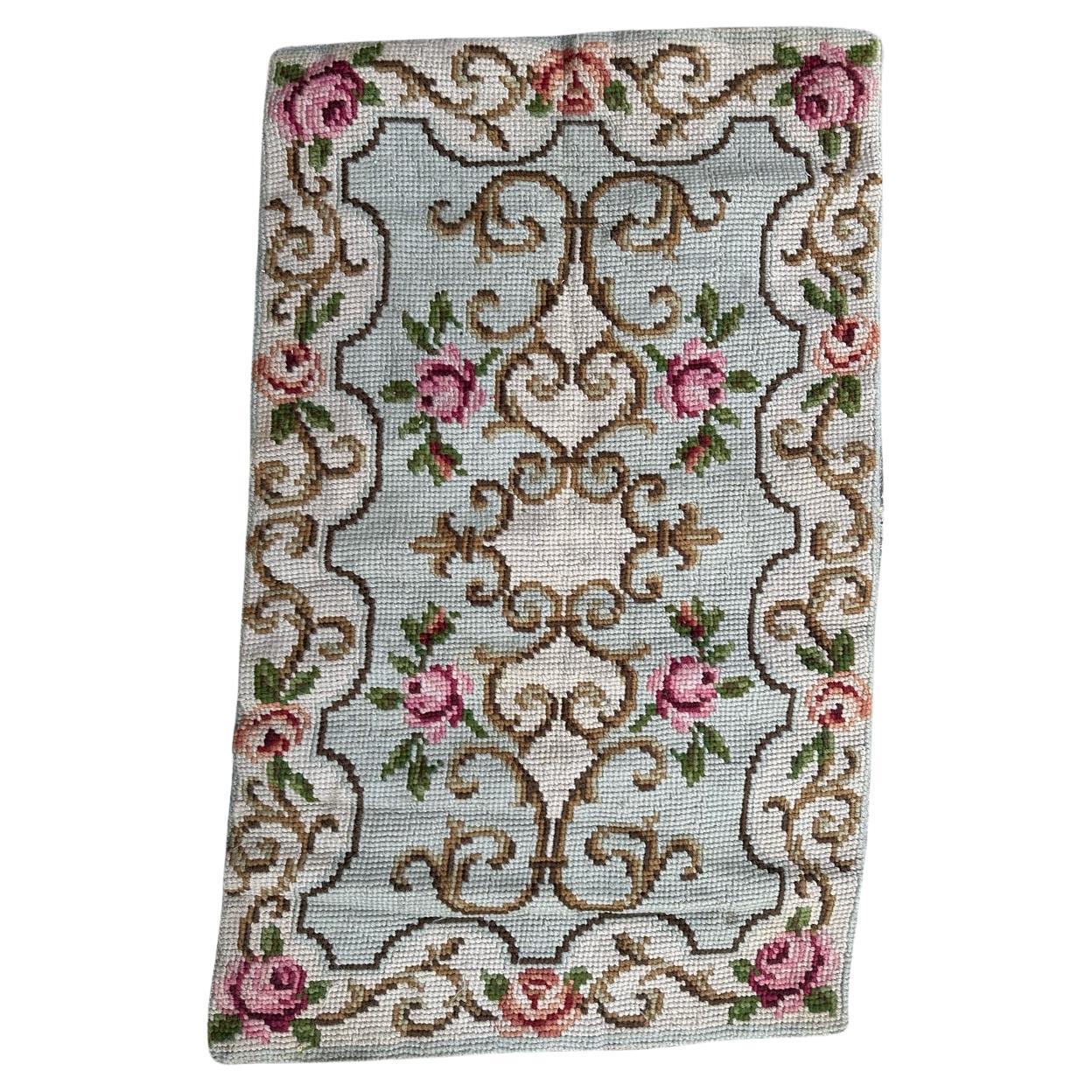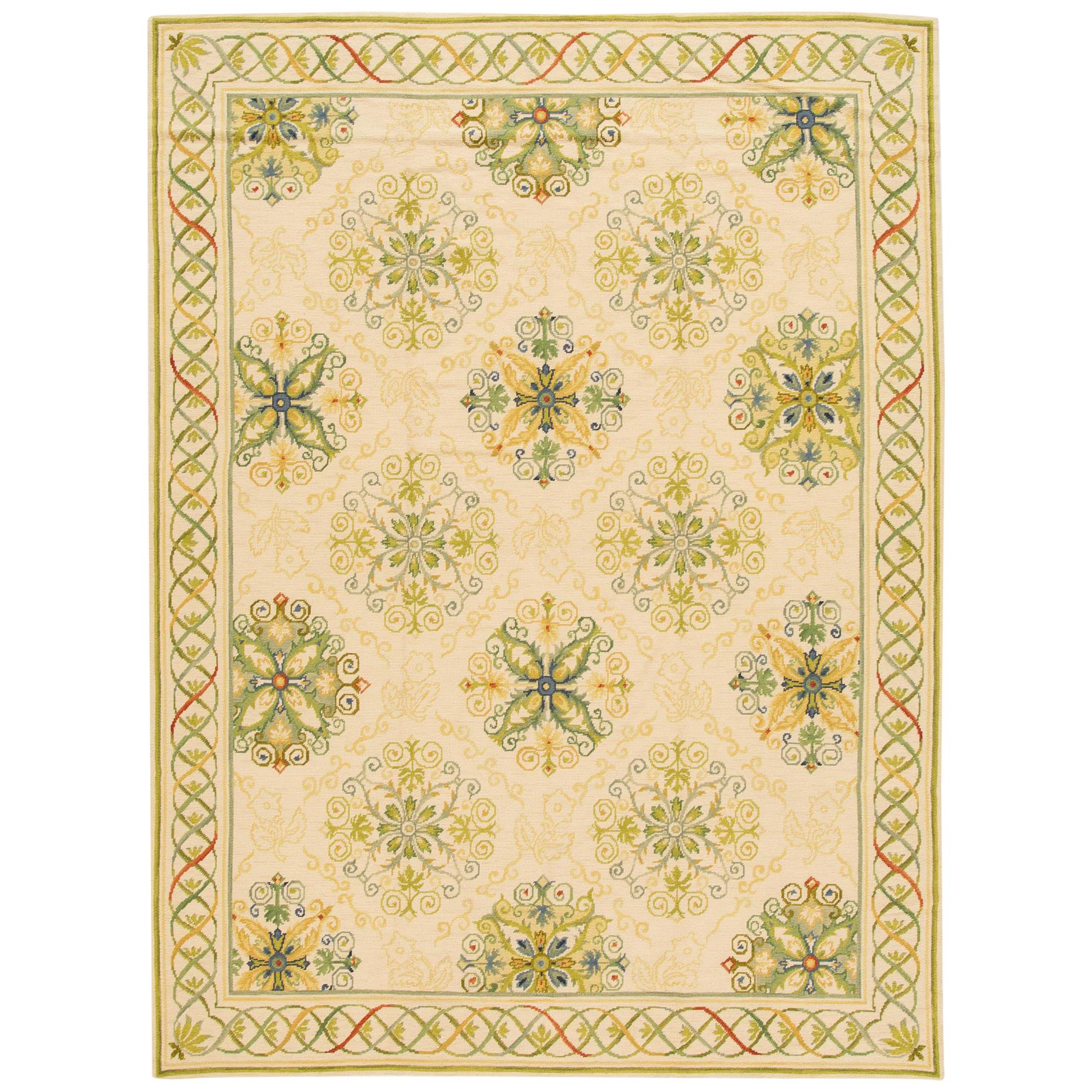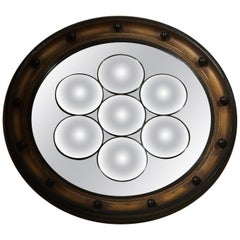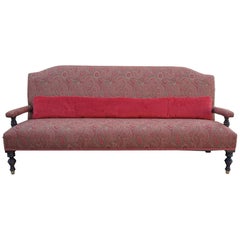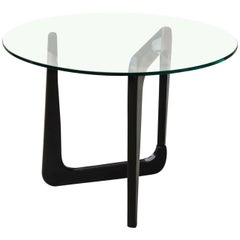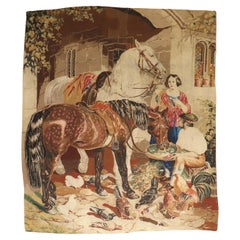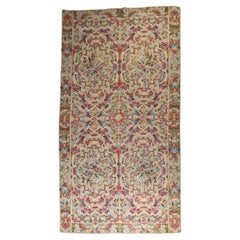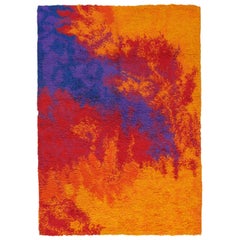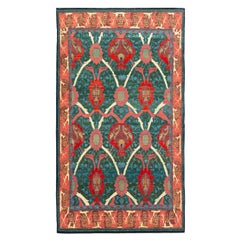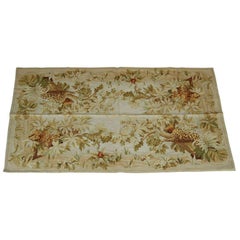
A Vintage Needlepoint Rug
View Similar Items
Want more images or videos?
Request additional images or videos from the seller
1 of 5
A Vintage Needlepoint Rug
About the Item
- Dimensions:Width: 64 in (162.56 cm)Length: 38.5 in (97.79 cm)
- Materials and Techniques:
- Place of Origin:
- Period:
- Date of Manufacture:Circa 1960
- Condition:Excelent in fact almost certainly never used after made.
- Seller Location:Hudson, NY
- Reference Number:1stDibs: 1102118113741
About the Seller
4.5
Vetted Professional Seller
Every seller passes strict standards for authenticity and reliability
Established in 1978
1stDibs seller since 2005
340 sales on 1stDibs
Typical response time: 1 to 2 days
Authenticity Guarantee
In the unlikely event there’s an issue with an item’s authenticity, contact us within 1 year for a full refund. DetailsMoney-Back Guarantee
If your item is not as described, is damaged in transit, or does not arrive, contact us within 7 days for a full refund. Details24-Hour Cancellation
You have a 24-hour grace period in which to reconsider your purchase, with no questions asked.Vetted Professional Sellers
Our world-class sellers must adhere to strict standards for service and quality, maintaining the integrity of our listings.Price-Match Guarantee
If you find that a seller listed the same item for a lower price elsewhere, we’ll match it.Trusted Global Delivery
Our best-in-class carrier network provides specialized shipping options worldwide, including custom delivery.More From This Seller
View AllVintage Convex Mirror
Located in Hudson, NY
This very unusual vintage convex mirror is actually a series of convex mirrors set down on a mirror in a round Regency style ball decorated fram...
Category
Mid-20th Century Wall Mirrors
Materials
Mirror, Wood
Vintage Edwardian Style Sofa
Located in Hudson, NY
This large vintage Edwardian style sofa made in the 20th century is crafted from mahogany and features ring turned arm supports with matching front l...
Category
Mid-20th Century Edwardian Sofas
Materials
Fabric, Mahogany
Vintage 50's End Table
Located in Hudson, NY
This end table design,most often seen as a coffee table, is after a design by Isamu Noguchi. Almost immediately considered a classical design of the time this table is most likely a...
Category
Vintage 1950s American Mid-Century Modern End Tables
Materials
Glass
$1,850
Vintage 1920's Neoclassical Bronze Chandelier
Located in Hudson, NY
This fine and small scale light fixture designed in a neoclassical style with a frosted and etched glass shade. The shade has an opalescence and the engraving is both acid etched an...
Category
Early 20th Century American Neoclassical Revival Chandeliers and Pendants
Materials
Bronze
Vintage Italian Baroque Style Mirror
Located in Hudson, NY
Made circa 1950 this vintage carved wood mirror has a great old surface and style. The Florentine gilding is rich being laid down on a deep ...
Category
Mid-20th Century Italian Baroque Revival Wall Mirrors
Materials
Mirror, Wood
Vintage Southwest Saguaro Wood Tripod Guierdon
Located in Hudson, NY
This interesting and unusual table made in the southwest circa 1930 is constructed of Saguaro wood, a kind of slow-growing dense cactus with a distinctive outer casing that is used for decorative display. The form is an extension of the mission movement which started in California, Mexico and the southwest as a simple need to furnish through local craftsmen homes and public spaces with natural local materials The tripod base used upside down is the direct form of the cactus. A decoratively shaped piece has been added to the base as a terminus and the knotty pine top is bordered in saguaro with pine supports creating the gueridon. Made as a local distinctive form this kind of furniture is similar in nature to tramp art furniture...
Category
Vintage 1930s American Mission Gueridon
Materials
Wood
You May Also Like
Zabihi Collection Horse Scene English Needlepoint
Located in New York, NY
an early 20th-century square size English Needlepoint
Measures: 6'10'' x 7'8''
Category
Early 20th Century English Aubusson Western European Rugs
Materials
Wool, Cotton, Foam
Zabihi Collection Dramatic Mid 19th Century English Needlepoint
Located in New York, NY
Dramatic mid 19th Century English Needlepoint ~
7'7'' x 16'3''
English needlepoint rugs, renowned for their profuse floral motifs, reached an artistic zenith in 1700-1750 but were...
Category
Antique Mid-19th Century English Aubusson Western European Rugs
Materials
Wool, Cotton, Foam
Vintage Rya Carpet, Swedish Rug, Colorful
Located in Port Washington, NY
1960s Swedish Rya rug with a colorful, plush wool pile. Size: 4'6" X 6'7".
Category
Mid-20th Century Swedish Mid-Century Modern Western European Rugs
Materials
Wool
Ararat Rugs Holland Park William Morris Carpet, Arts and Crafts, Natural Dyed
By Ararat Rugs
Located in Tokyo, JP
The source of carpet comes from the book Arts & Crafts Carpets, by Malcolm Haslam, and David Black, 1991, fig.49. This Hammersmith carpet was designed by William Morris in 1882, in the United Kingdom. In 1887 English artist and bookbinder T.J. Cobden Sanderson, suggested that a new group be named the “Arts and Crafts Exhibition Society” As a result, he was the first to use the term “Art and Crafts” and also is credited with naming this new emerging movement. The Arts & Crafts movement was inspired by the degradation of product standards that resulted from the factory production age. The rise of machinery in manufacturing caused a noticeable decline in uniqueness and crafts. These anti-Industrial reformers promoted economic advancement and social change. They wanted to eliminate poor quality and “artificial” items from 19th century British society. They saw a plethora of uninteresting items on display at the Great Exhibition of 1851 and became inspired to launch a Campaign for originality and uniqueness.
William Morris was an English designer, as well as an uplifting social activist and writer. Morris is credited with sparking the rebirth of textile arts and traditional means of production. In 1861, Morris and a small group of designers opened an incredibly fashionable design company that grew to be largely successful. Morris left behind works in many different mediums such as textiles, books, furniture, stained glass, and area rugs. But in the end, he is most remembered for the magnificent wallpapers that he designed. He got much of his inspiration from the natural world. Through his interior decor pieces, Morris set out to convert rooms or spaces into meadows with beautiful trees meandering, vines, and plants. This concept of taking something Industrial and man-made, and converting it into something natural is what William Morris meant when he once said: “-any decoration is futile… when it does not remind you of something beyond itself.”
Morris was a huge commercial success and his works are some of the most sought-after pieces in the world of design and decor. He is also credited with almost single-handedly reviving the British textile arts as well as their methods of production. Morris was also severely critical of machine-made goods, exclaiming, “Today almost all wares that are made by civilized man are shabbily and pretentiously ugly.” Houses were filled “with tons and tons of unutterable rubbish,” which, he suggested, should be heaped onto a gigantic bonfire! “As a condition of life, production by machinery is altogether evil.” He masterminded one of the most well-known styles of Arts & Crafts, recognizable by its twisting and arching patterns and simple, elegant floral design prints. Although Morris believed that Persian carpets were the greatest ever made, he adopted the coarser Turkish (Ghiordes) knot for his hand knotted carpet manufacture. They were woven at a thickness of 25 knots to the square inch at that time. Morris & Co.’s rugs are reminiscent of Persian garden design carpets in that they are smartly styled depictions of English gardens. Donegal also started producing highly desirable Irish rugs in the late 19th century. The Donegal rugs were predominantly created by English architects C.F.A. Voysey and Gavin Morton. The handcrafted Voysey rugs are typically woven in England, Scotland, and Ireland. Voysey had a knack for using contrasting shapes to decorate flat monochromatic spaces. Dark outlines added a flair of drama to his signature pattern and Celtic rug...
Category
21st Century and Contemporary Turkish Arts and Crafts Western European Rugs
Materials
Wool, Organic Material, Natural Fiber
$5,360 Sale Price
20% Off
Free Shipping
Stunning Large Shag Pile Rug Depicting Houses in the Style of L.S Lowry
By L. S. Lowry
Located in West Sussex, Pulborough
We are delighted to offer for sale this lovely brand new Shag Pile run depicting L.S Lowry style houses
A very comfortable and thick rug, extremely well made and clearly Lowry in...
Category
20th Century English Mid-Century Modern Western European Rugs
Materials
Wool
$2,158 Sale Price
20% Off
Vintage Rya Carpet, Swedish, Soft Colors, Mid-Century Modern
Located in Port Washington, NY
1950s Swedish Rya rug with plush wool pile. Measures: 2'11" x 9'9".
Category
Mid-20th Century Swedish Mid-Century Modern Western European Rugs
Materials
Wool
